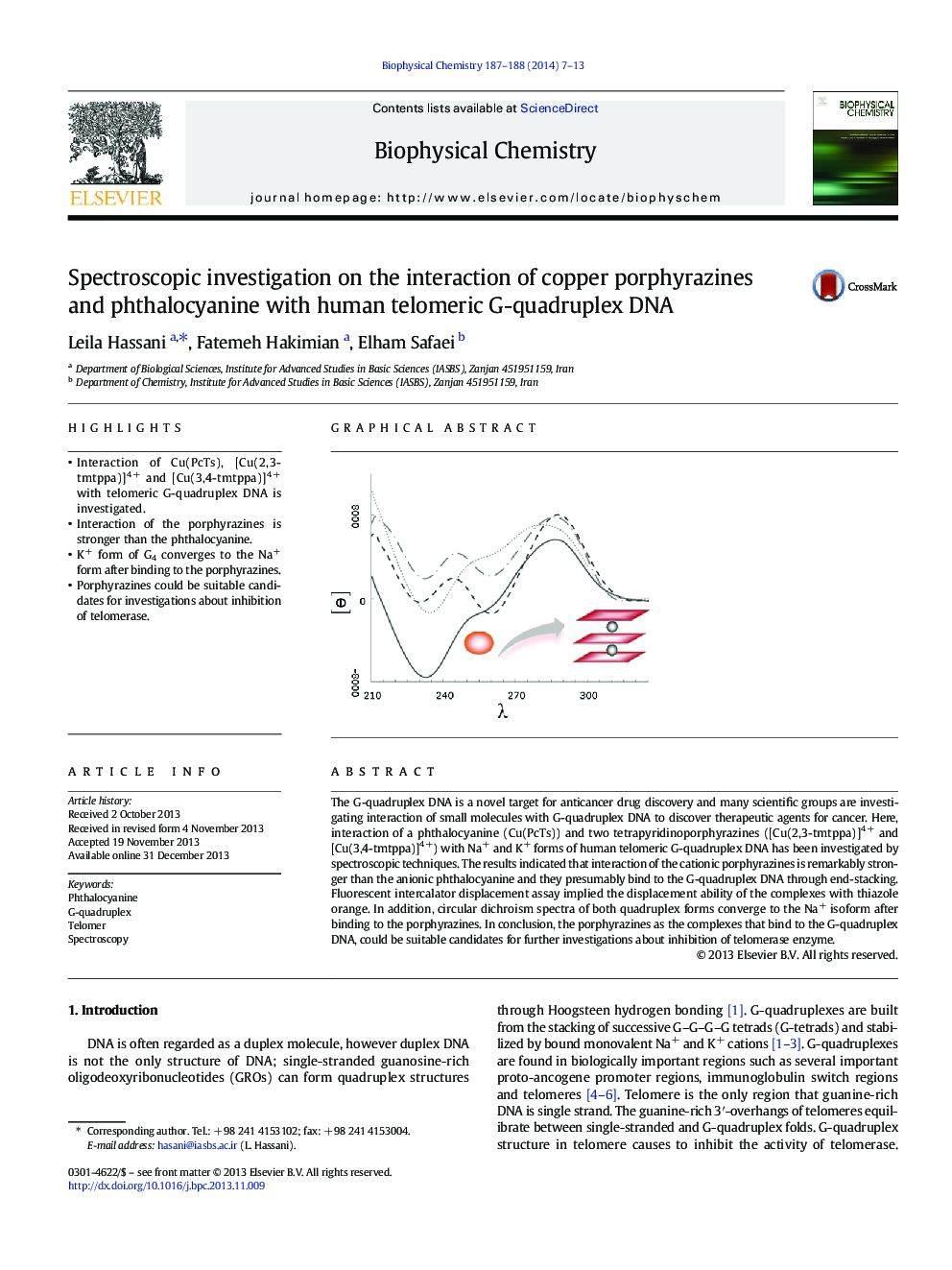| کد مقاله | کد نشریه | سال انتشار | مقاله انگلیسی | نسخه تمام متن |
|---|---|---|---|---|
| 5371038 | 1503927 | 2014 | 7 صفحه PDF | دانلود رایگان |

- Interaction of Cu(PcTs), [Cu(2,3-tmtppa)]4Â + and [Cu(3,4-tmtppa)]4Â + with telomeric G-quadruplex DNA is investigated.
- Interaction of the porphyrazines is stronger than the phthalocyanine.
- K+ form of G4 converges to the Na+ form after binding to the porphyrazines.
- Porphyrazines could be suitable candidates for investigations about inhibition of telomerase.
The G-quadruplex DNA is a novel target for anticancer drug discovery and many scientific groups are investigating interaction of small molecules with G-quadruplex DNA to discover therapeutic agents for cancer. Here, interaction of a phthalocyanine (Cu(PcTs)) and two tetrapyridinoporphyrazines ([Cu(2,3-tmtppa)]4Â + and [Cu(3,4-tmtppa)]4Â +) with Na+ and K+ forms of human telomeric G-quadruplex DNA has been investigated by spectroscopic techniques. The results indicated that interaction of the cationic porphyrazines is remarkably stronger than the anionic phthalocyanine and they presumably bind to the G-quadruplex DNA through end-stacking. Fluorescent intercalator displacement assay implied the displacement ability of the complexes with thiazole orange. In addition, circular dichroism spectra of both quadruplex forms converge to the Na+ isoform after binding to the porphyrazines. In conclusion, the porphyrazines as the complexes that bind to the G-quadruplex DNA, could be suitable candidates for further investigations about inhibition of telomerase enzyme.
Journal: Biophysical Chemistry - Volumes 187â188, MarchâApril 2014, Pages 7-13